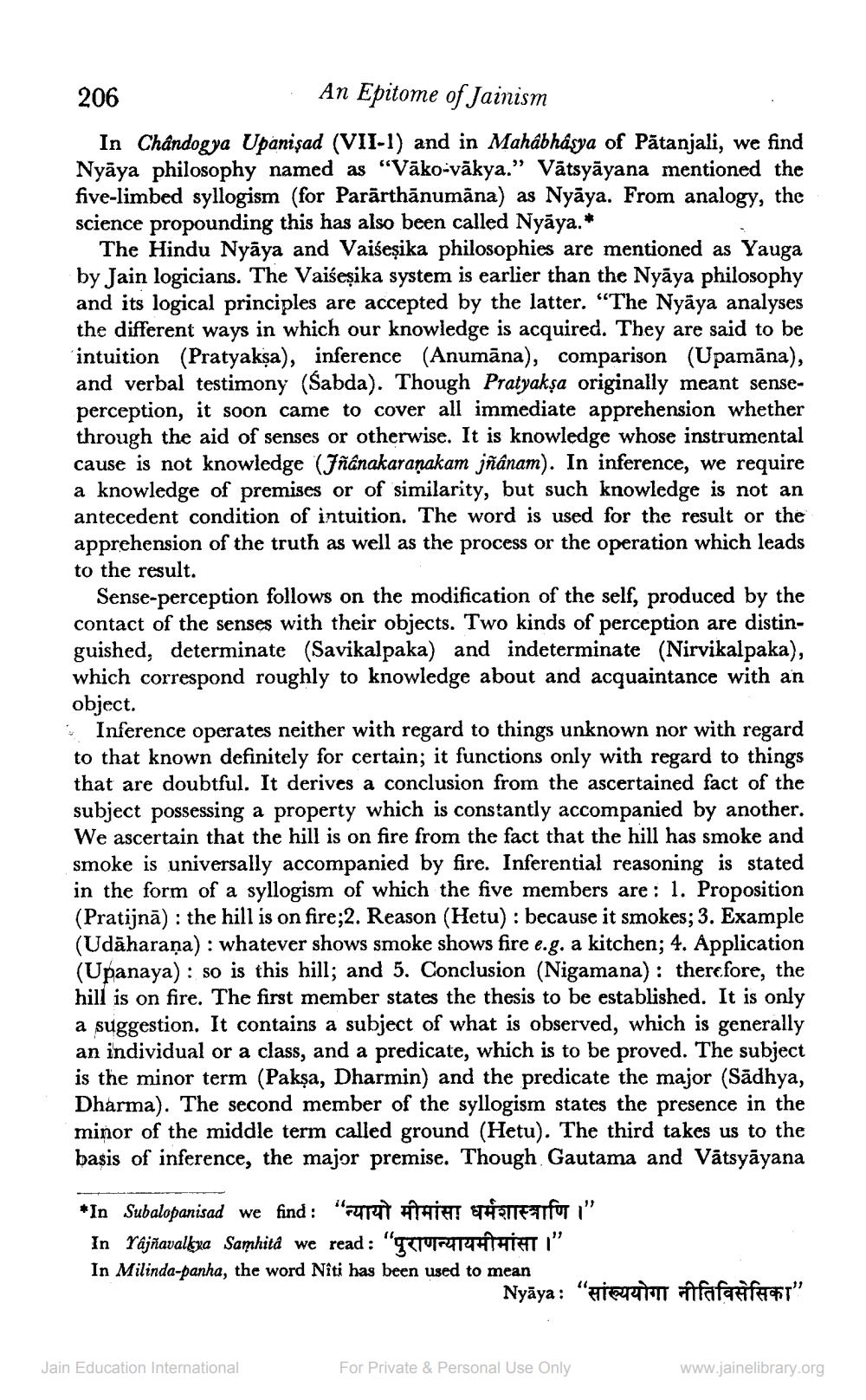________________
206
An Epitome of Jainism
In Chandogya Upanişad (VII-1) and in Mahâbhâsya of Pātanjali, we find Nyāya philosophy named as "Vāko-vākya.” Vätsyāyana mentioned the five-limbed syllogism (for Parārthānumāna) as Nyāya. From analogy, the science propounding this has also been called Nyāya.*
The Hindu Nyāya and Vaišeșika philosophies are mentioned as Yauga by Jain logicians. The Vaiseșika system is earlier than the Nyāya philosophy and its logical principles are accepted by the latter. “The Nyäya analyses the different ways in which our knowledge is acquired. They are said to be intuition (Pratyakşa), inference (Anumāna), comparison (Upamāna), and verbal testimony (Sabda). Though Pratyakṣa originally meant senseperception, it soon came to cover all immediate apprehension whether through the aid of senses or otherwise. It is knowledge whose instrumental cause is not knowledge (7ñánakaranakam iñanam). In inference, we require a knowledge of premises or of similarity, but such knowledge is not an antecedent condition of intuition. The word is used for the result or the apprehension of the truth as well as the process or the operation which leads to the result.
Sense-perception follows on the modification of the self, produced by the contact of the senses with their objects. Two kinds of perception are distinguished, determinate (Savikalpaka) and indeterminate (Nirvikalpaka), which correspond roughly to knowledge about and acquaintance with an object.
Inference operates neither with regard to things unknown nor with regard to that known definitely for certain; it functions only with regard to things that are doubtful. It derives a conclusion from the ascertained fact of the subject possessing a property which is constantly accompanied by We ascertain that the hill is on fire from the fact that the hill has smoke and smoke is universally accompanied by fire. Inferential reasoning is stated in the form of a syllogism of which the five members are : 1. Proposition (Pratijnā) : the hill is on fire;2. Reason (Hetu) : because it smokes; 3. Example (Udāharaña) : whatever shows smoke shows fire e.g. a kitchen; 4. Application (Upanaya) : so is this hill; and 5. Conclusion (Nigamana): therefore, the hill is on fire. The first member states the thesis to be established. It is only a suggestion. It contains a subject of what is observed, which is generally an individual or a class, and a predicate, which is to be proved. The subject is the minor term (Pakşa, Dharmin) and the predicate the major (Sadhya, Dharma). The second member of the syllogism states the presence in the minor of the middle term called ground (Hetu). The third takes us to the basis of inference, the major premise. Though Gautama and Vätsyāyana
*In Subalopanisad we find : Tut afriH! STRETTO " In rajñavalkra Samhità we rea In Milinda-panha, the word Nîti has been used to mean
Nyāya: "Te
Afafanfait"
Jain Education International
For Private & Personal Use Only
www.jainelibrary.org




